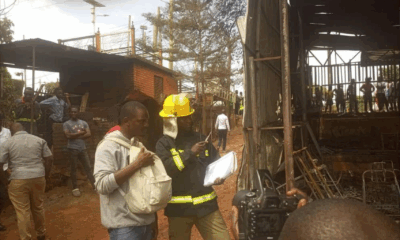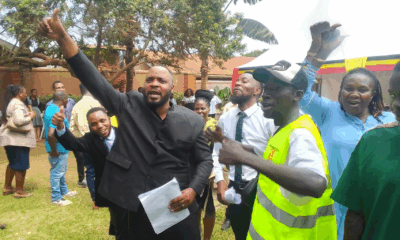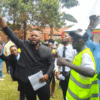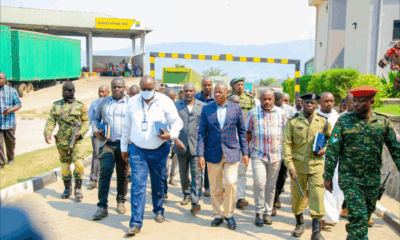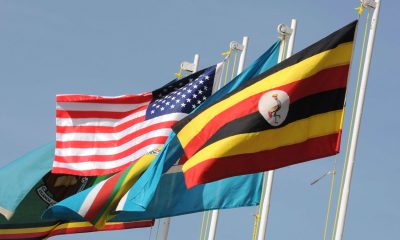Business
The power from unity
Grand plan to integrate power grids in the region starts to bear fruit
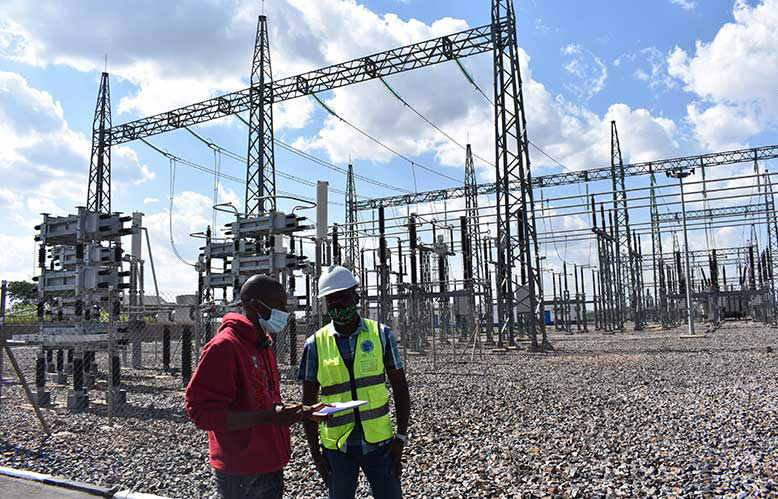
Mbarara sun station is part of the new 93km Mbarara-Shango transmission line that recently went live, and allows Uganda, Rwanda and DRC to trade power.
The recent completion of the 93km Mbarara-Shango cross-border power transmission line between Uganda and Rwanda has transformed the dream of trading electricity between the two countries into a reality.
The Sunrise has reliably learnt that Uganda and Rwanda started trading in power recently following the completion of the transmission line that connects Uganda’s grid at Mbarara to Rwanda’s at Shango.
Energy engineer Jacob Manyuon Deng, working with the Nile Equatorial Lakes Subsidiary Action Program (NELSAP) confirmed to The Sunrise that another transmission line that connects DRC (from around lake Kivu area) to Shango in Rwanda, has also been upgraded from 130KV to 220KV, allowing it to be able to transmit power from Rwanda and even Uganda.
“This line (from DRC) intersects at Shango and then connects to Rusumo (new dam on border between Tanzania, Rwanda and Burundi) through Bungesera,” Eng. Deng said.
The realization of these regional power interconnections is considered a milestone and one of the key achievements of regional cooperation through the sharing of water resources of the Nile. The construction of the Mbarara-Shango line, and a number of other electricity interconnection projects that are ongoing or are being planned, were conceived by the five countries of Rwanda, Burundi, Uganda, DRC and Kenya that subscribe to the Nile Equatorial Lakes (NEL) grids, which was conceived under the Nile Basin Initiative (NBI).
And the network is growing, as Eng. Deng noted that plans are in high gear to integrate the power grid in East Africa under the East Africa Power Pool to that of the Southern African under SADC, creating an even more bigger market for power but also an incentive for investors arising from the availability of power.
“Although Tanzania is part of the Southern Africa Development Cooperation (SADC) grid network, we are working on integrating the East African Power Pool network with the SADC network and North Africa power pool to create a fully integrated regional electricity network,” said Eng. Deng.
The completion and anticipated commissioning of the 80 Mega Watt Rusumo Hydro-power dam in December 2023, has given even more impetus to the regional East African Power Pool by increasing accessibility to electricity among the five member countries that are so far now fully interconnected.
Rusumo Hydro Power dam is located at what was previously Rusumo falls, which also acts as the border point that joins three countries of Rwanda, Burundi and Tanzania.
It was conceived under the Nile Basin Initiative (NBI) as a project that would help transform the lives of an estimated half a million households that previously had no or little access to hydro-power. It was also considered as a project that would unite the three countries by encouraging regular collaboration in the operation of the dam but also through ensuring the collaborative management of the catchment of the river basin that supplies water to the dam.
Uganda is also expected to witness the completion of the 600 Mega Watt Karuma Hydro power dam perhaps before end of 2023. The realization of the integrated grid, opens the highway for Uganda to export excess power to neighbouring countries. Uganda’s ministry of energy officials say that Uganda currently produces excess hydro-power, even though critics argue that the high cost of a unit cost of electricity has makes power unaffordable to many ordinary Ugandans hence making it to appear as though there is excess power.
The role of NELSAP
“The NEL grids is the epitome of this integration. NELSAP (the project implementing arm of NBI) is the one that did the feasibility studies but also the one that has been giving the technical support.”
“The realization of the integration of the power grids speaks volumes about the successes in the attainment of regional cooperation using our shared water resources,” Eng. Deng adds; “To an ordinary person or business, the integration of the network shall manifest in terms of reduced cost of power because the network will expand access to more and cheaper hydro power than was previously available using the national grids.” “Many countries in the region have been using diesel-powered generation, which are expensive.”
“When you integrate the region through interconnecting the power grids, you reduce the cost, the common man will enjoy and economic development will also be boosted.”
“If I can use the example of Burundi and South Sudan that have very low accessibility to electricity (11% for Burundi and 7.5% for South Sudan), connecting to this network will allow them to tap into cheaper excess hydro power from neighbouring countries.
Uganda and South Sudan are in advanced stages of negotiations that will allow construction of a high-voltage 400KV power line that will connect South Sudan to Uganda through the Karuma-Juba line.
In June this year, Ministry of Energy officials from both countries completed power purchase agreements, which will help Uganda to secure a loan from Japan International Cooperation Agency (JICA) to fund construction of the Ugandan-side (196KM) long part of the transmission line.
The agreement also allows Uganda to sell power to some towns around the Uganda-South Sudan border.
For the case of Rusumo, the use of a regional body NELSAP to spearhead the construction and project implementation has already proved key and is likely to play an even bigger role in future, by reducing on bureaucracy and mistrust among member countries that allows smooth running of the project.
Tapping the potential of GERD
The development of the Nile Basin regional energy market through the integration of the different power grids, is indeed progressing faster than many people perhaps appreciate. For example, given her excess power output, Ethiopia last year started selling power to Kenya following the completion of a very high-voltage (500KV) 1,045km-long electricity transmission line dubbed the Ethiopia-Kenya Transmission Interconnection Highway.
The inter-connection of the energy grids will increase efficiency in the evolving energy market by increasing competition among the electricity producing countries which will eventually lead to lowering the price of electricity and boost economic growth.
For example, before the completion of the Ethiopia-Kenya Transmission Highway, Uganda was Kenya’s major source of electricity imports. But with the Ethiopian line now a reality, Kenya has a better bargaining leverage.
“The 5000 Mega Watt capacity Grand Ethiopia Renaissance Dam (GERD) that is being built by Ethiopia, is for the region. If you have not integrated in the energy network, where will you go? You must integrate so that you share in the energy resources.”
“In energy trade, there is what is called wheeling agreements that allow countries without a common border to trade in power and only pay a levy to the country whose grid allows the two main countries to transmit power.
Comments



